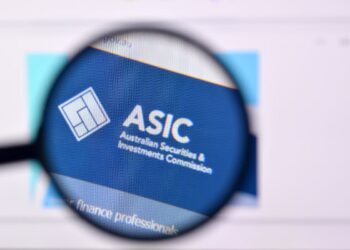The planned review of leverage in superannuation in two years time would be premature, writes Aaron Dunn.
The Australian Taxation Office's (ATO's) views expressed in draft ruling SMSFR 2011/D1 have sparked further interest in the use of limited recourse borrowing arrangements, in particular the ability to make improvements to the acquired asset.
With leverage in superannuation to be reviewed by the Government in two years' time, we are now 18 months down the track since the Cooper Review recommendations were handed over.
The question is when and what will the Government do with respect to utilising borrowing in superannuation? In my view, any review into the use of leverage would be premature.
Recommendation 8.10 of the of the final report stated that as a result of the changes to borrowing in September 2007 and the proposed consumer protection measures that had been announced, the Government should review the ability to leverage in two years' time to ensure that borrowing has not become, and does not look like becoming, a significant focus of superannuation funds.
These views expressed within the recommendation were ultimately supported by Government as part of the Stronger Super reforms.
Since this recommendation was accepted, the legislative landscape has not only changed, but many of the reforms announced by Government to improve consumer protections have never seen the light of day.
Superannuation law changes
The repeal of section 67(4A) and introduction of sections 67A and 67B into the SIS Act significantly changed the way in which a fund could invest in instalment warrants/limited recourse borrowing arrangements.
New laws introduced from 7 July 2010 appeared to distinguish for the first time between traditional and non-traditional instalment warrants – the latter becoming known as limited recourse borrowing arrangements (as introduced into the drafting of s67A).
These law changes were designed to allow for the holding trust to acquire and hold on to only a single acquirable asset, not a multiple of assets. A defined range of replacement rules was also added into s67B that effectively limited any changes to property becoming a different asset.
Finally, the law changes also built in greater protections of recourse against the fund trustees in the event of default by both the lender and any other parties, in particular guarantors.
Whilst the initial industry response to these law changes was negative, the views recently expressed within SMSFR 2011/D1 have led many to believe the 'balance' is now right: it provides more logic around the definition of a single acquirable asset and distinguishes between repairs, maintaining and improving an asset.
But, also importantly, it includes the necessary protections in the event of default (something that didn't necessarily exist with many of the financial collapses that triggered the Parliamentary Joint Committee enquiries into financial advice and leverage originally).
Proposed Corporations law changes
In March 2010, the Government announced proposed changes to the Corporations Act to provide that certain borrowing arrangements will be classified as a financial product. These draft regulations outlined that:
- Limited recourse borrowing arrangements are financial products under the Principal Act when acquired by superannuation funds;
- Limited recourse borrowing arrangements are not a credit facility under the Principal Act when acquired by superannuation funds; and
- An Australian Financial Services Licence covering derivatives is taken to also cover limited recourse borrowing arrangements.
With an election called later in 2010, these draft regulations never saw the 'light of day' and to date nothing further has been issued by government on this topic.
It is the Government's view in their response to the Cooper Review recommendations that 'leverage poses a risk to super fund assets in both SMSFs (self-managed superannuation funds) and Australian Prudential Regulation Authority-regulated funds because it can magnify losses and reduce liquidity'.
However, just as the Statistical summary into SMSFs debunked many of the myths around SMSFs, the Government needs to allow time to assess the impact of these legislative changes and also determine whether a licensing framework is required (to provide advice on SIS Act s67A borrowing arrangements).
The Future of Financial Advice reforms provide the opportunity for the Government to consider whether this issue needs to be put back on the table.
It is important to note that many of the SMSF loan providers already have policies in place to ensure consumers obtain advice prior to entering into borrowing arrangements, ensuring that they understand the requirements and associated risks involved.
Borrowing within super should not be a primary focus of SMSF trustees, however where appropriate it can play an important role with individuals to meet their retirement goals. Let's hope we don't see any knee-jerk reaction by the Government in 2012 to a strategy that both financial advisers and consumers are now only starting to understand.
Aaron Dunn is the managing director of The SMSF Academy.





